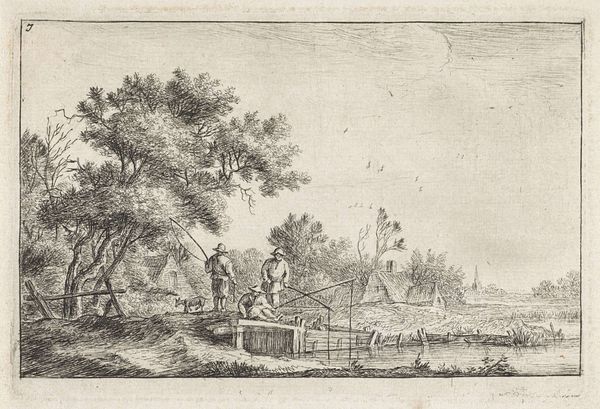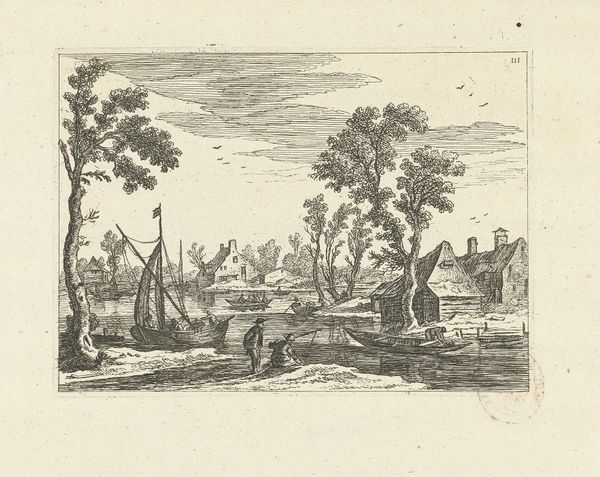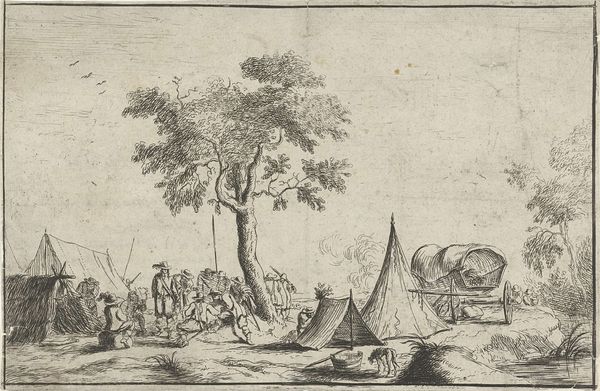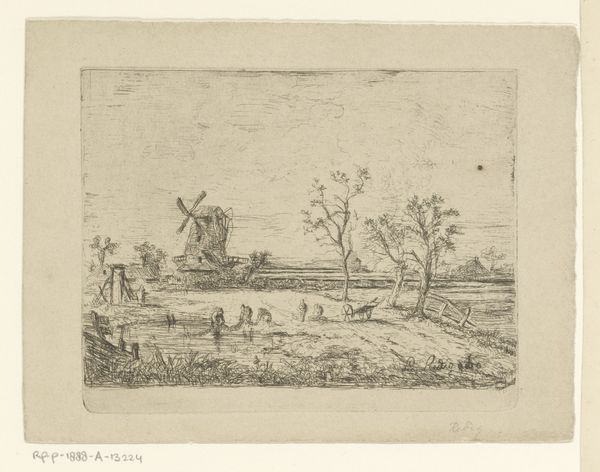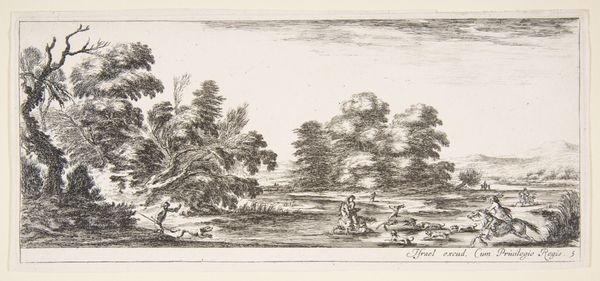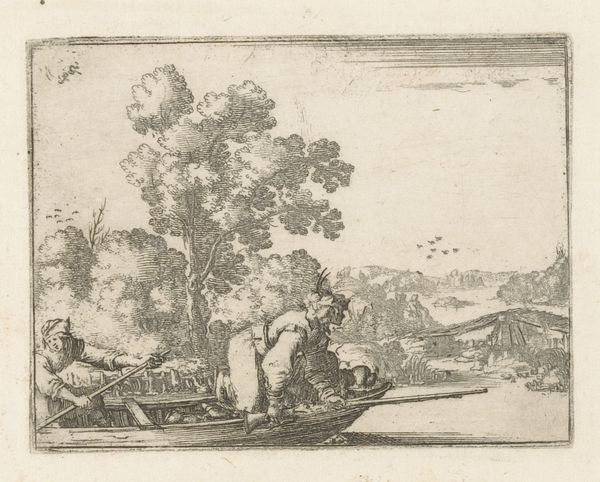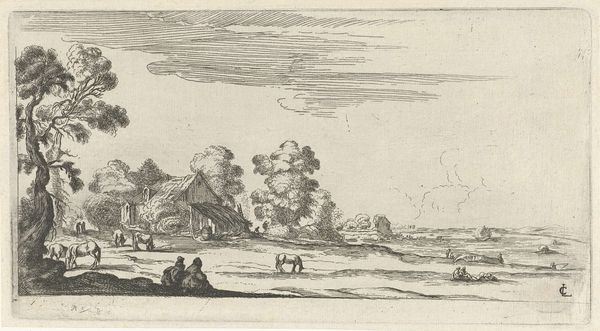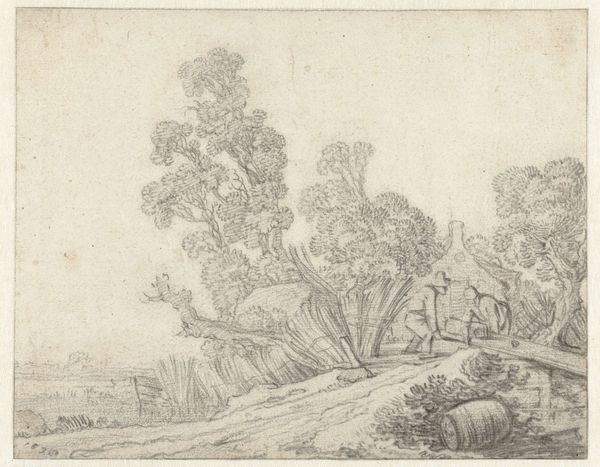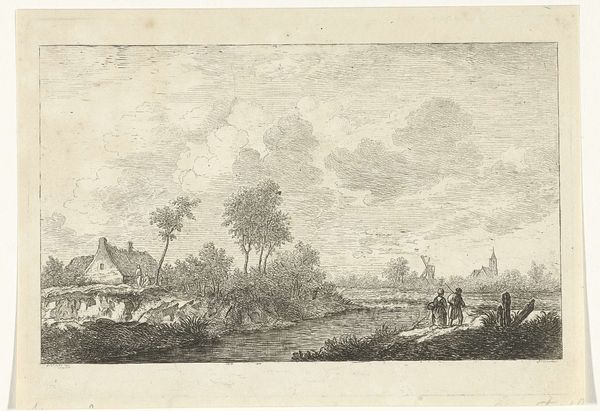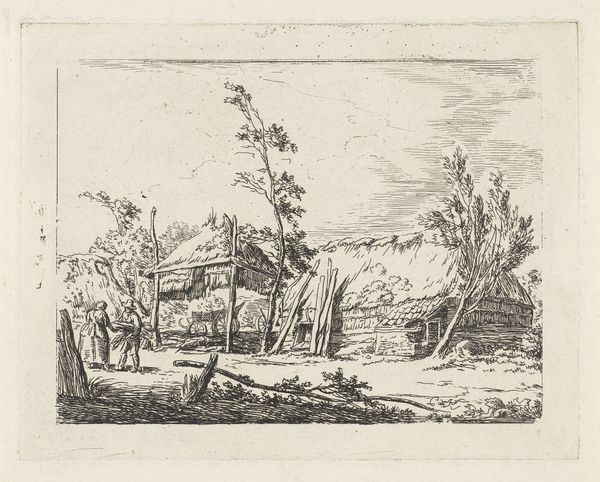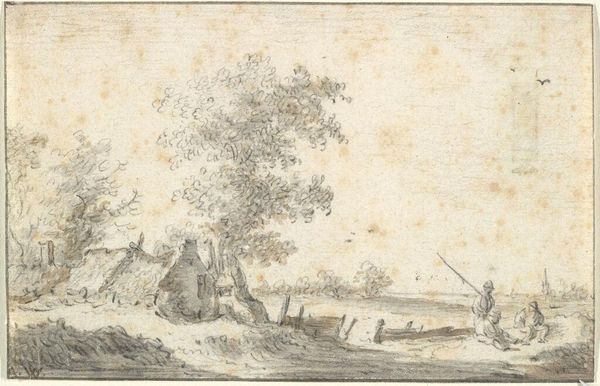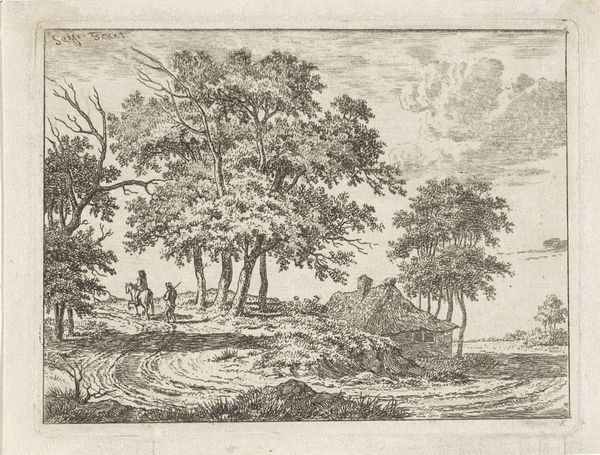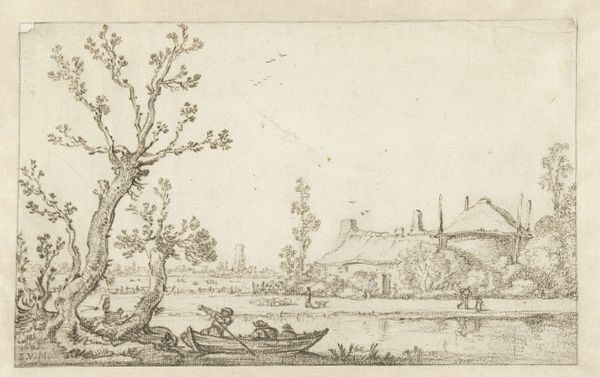
print, etching
#
dutch-golden-age
# print
#
etching
#
landscape
#
genre-painting
#
realism
Dimensions: height 97 mm, width 167 mm
Copyright: Rijks Museum: Open Domain
Editor: Here we have Jan van de Cappelle's "River Landscape with Two Men in a Rowing Boat," etched sometime between 1640 and 1679. The fine lines give it such a delicate quality, like a fleeting memory of the Dutch countryside. What can you tell me about it? Curator: This etching really shows the changing value of landscape during the Dutch Golden Age. Etchings were, comparatively speaking, cheaper to produce than paintings and allowed for a broader consumption of art across Dutch society. These rural scenes weren’t just pretty pictures. They represented Dutch land ownership and pride connected to the expansion of merchant capitalism. Notice how the cattle almost seem like inventory. Editor: That’s fascinating! I hadn't considered the print’s role in wider society. Is there a link between landscape etchings and the intense Dutch focus on trading by river and sea? Curator: Absolutely! Rivers were essential trade routes and crucial for connecting inland towns to bustling ports. Van de Cappelle was himself the owner of a dye works and wealthy – artists had to fund their own productions, with the market being the determining factor for which artists thrived. These detailed river views celebrate infrastructure central to the Dutch economy. The artist's wealth came from those very activities he depicts. What do you make of that connection? Editor: It complicates my appreciation, certainly. I was initially taken by the tranquil atmosphere, but knowing it's tied to economic activities and potentially colonial expansion makes me reconsider its inherent value. I am not sure that the artist sought to show the reality of such exploitation, though. Curator: Right, we must acknowledge how economic forces shape artistic creation and consumption, impacting its legacy and cultural weight. Editor: So it seems like an appreciation for Van de Cappelle involves understanding both his artistic talent *and* his socio-economic standing! Curator: Exactly. Understanding art means understanding its place in a broader, material world. Thanks for making these points clearer to me as well.
Comments
No comments
Be the first to comment and join the conversation on the ultimate creative platform.
